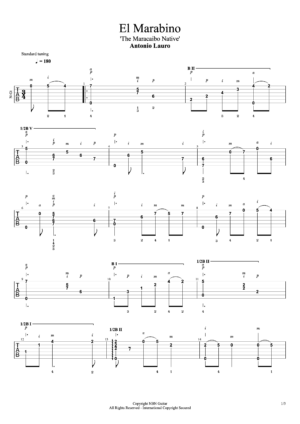Introduction
This etude (study) belongs to Fernando Sor’s ’12 Studies for Guitar, Op. 35′. Whilst Sor’s more famous pieces take the limelight it is important to remember his significant contribution to the development of guitar technique. The Spanish guitarist/composer is probably most well-known for his ‘Variations on a Theme of Mozart’. Sor was widely traveled and lived in Paris, London, Moscow and toured Europe extensively before spending his final years in Paris.
Etude No. 3, Op. 35 by Fernando Sor is a cornerstone of classical guitar literature, exemplifying the intricate beauty and technical depth of Sor’s compositional style. Fernando Sor, often hailed as the “Beethoven of the Guitar,” was a pioneering 19th-century Spanish guitarist and composer whose works have had a profound and lasting impact on the classical guitar repertoire. His compositions are celebrated for their melodic elegance, harmonic richness, and structural clarity, making them essential studies for both aspiring and advanced guitarists.
Etude No. 3, Op. 35, is a quintessential example of Sor’s pedagogical genius. It focuses on developing finger independence and right-hand precision through a series of flowing arpeggios and intricate melodic lines. The piece’s lyrical quality and harmonic sophistication transform it from a mere technical exercise into a musically expressive work, challenging the guitarist to balance technical execution with emotional depth.
Performing Etude No. 3 requires a keen sense of musicality and technical proficiency. The guitarist must navigate the piece’s arpeggiated passages with clarity and fluidity, while also bringing out the expressive potential of the melody. This etude emphasizes tone production, dynamic contrast, and phrasing, encouraging the performer to explore the guitar’s full range of expressive capabilities.
Etude No. 3, Op. 35 serves not only as a valuable technical study but also as a beautiful concert piece that showcases the guitar’s lyrical and expressive potential. Sor’s ability to blend technical challenges with musical elegance ensures that this etude remains a cherished and enduring part of the classical guitar repertoire.
This brilliant little etude from Fernando Sor will help the aspiring guitarist develop several important theoretical and technical points:
-
Starting a piece with an anacrusis (upbeat)
-
Playing in A-minor
-
Understanding the tempo indication Larghetto and its BPM
-
Recognising the accidentals F# & G#
-
Treating two or more right-hand fingers as a single finger
-
Playing block chords and avoiding ‘rolling’ the fingers of the right-hand i.e. no arpeggiato
Musical Style
Fernando Sor’s musical style is a synthesis of Classical elegance and Romantic expressiveness, marked by lyrical melodies, rich harmonies, and sophisticated structures. Known as the “Beethoven of the Guitar,” Sor’s compositions reflect his deep understanding of both guitar technique and broader musical forms. His works often feature intricate counterpoint, balanced phrasing, and dynamic contrasts, making them both technically demanding and musically rewarding. Sor’s contributions to guitar pedagogy, particularly through his studies and etudes, have left a lasting legacy, shaping the development of classical guitar repertoire and technique.
Notable Pieces
Five notable pieces by Fernando Sor:
• Grand Solo, Op. 14
• Variations on a Theme by Mozart, Op. 9
• Fantaisie élégiaque, Op. 59
• Etude No. 6, Op. 29
• Etude No. 17, Op. 6
Let your fingers fly!
Josh








Reviews
There are no reviews yet.